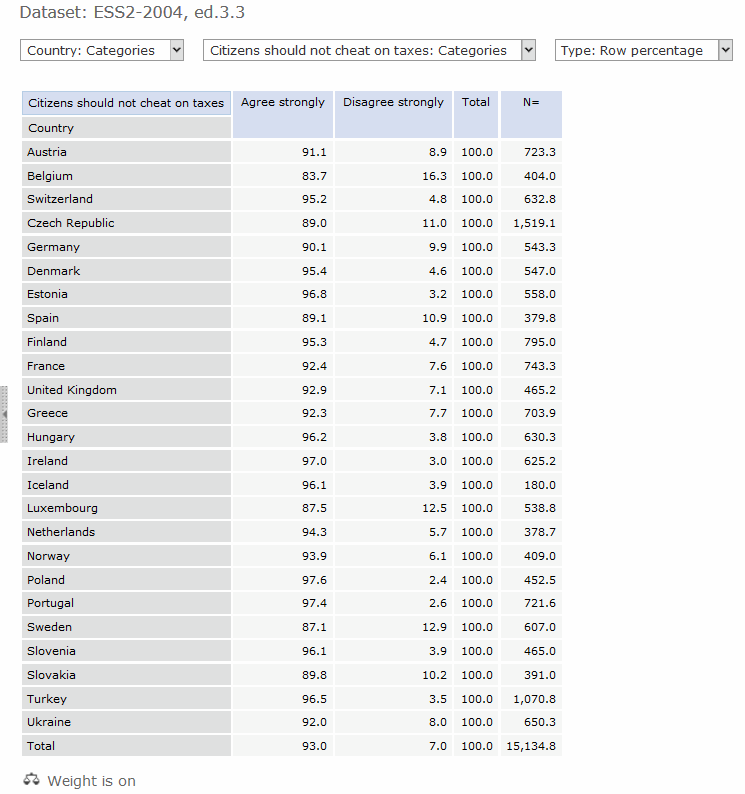This is a worked example using the ESS Round 2 data to produce a table showing the distribution of key characteristics for a selection of countries of interest with and without weights for attitudes to the statement "Citizens should not cheat on their taxes". You will need to go online to follow this activity and register with ESS.
This will produce a table with the countries down the left-hand stub and the responses to the questions across the top. The default for percentage calculation is column percent. In this instance we want row percent.
This produces a table showing the distribution of the variable for each country on unweighted data. The N in the right hand column is the number of cases in each country. Comparisons made using this table would be invalid.

You can also limit the number of categories displayed using the drop down menu for the variable, selecting Choose categories and ticking which categories you want to include, for example, Agree strongly and agree and click Update, or choosing a smaller number of countries. The table now is more readable but pay attention to how the percentages are calculated.